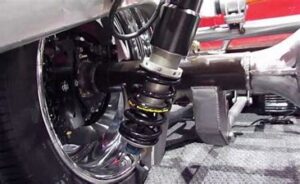Cars are made up of thousands of parts. Some parts have to work together to transfer signals. For instance, consider the transmission system. It includes a gearbox, clutch, driving shaft, and axles that come under the system. These parts in the system require lubricant for better functioning. Also, the oil reduces the friction between the surfaces and reduces the wear period of both materials. The fluid travels all over the system. After some time, the liquid starts to lose its properties and starts to turn black, and later settle down as slugs. It is not visible outside, but the sludgy fluid affects the power transmission. Learn about the black transmission fluid and check how to fix them through this article.
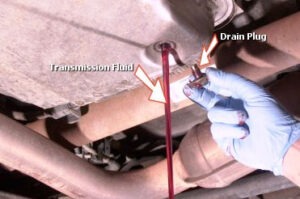
Table of Contents
What Does Black Transmission Fluid Means?
The transmission fluid varies from car to car based on make and type. Usually, the transmission system in manual cars operates less than the one in automatic cars comparatively. In the automatic transmission cars, the gear systems have to change accordingly again and again automatically where the fluid has to be replaced sooner than in the manual cars.
The transmission fluid starts to change into a black oil over a period indicating that the life of the liquid has ended. Also, the dirt enters the system sometimes and contaminates the oil, and reduces its life. The person can notice a burnt oil smell because the oil is not working correctly in the system. This is also a symptom of a faulty engine, so better check the cause of the smell and act accordingly. A black transmission fluid means that the life of the oil is over, and it is time to replace it for proper functioning.

What Causes This Issue?
Certain factors affect the properties of the oil and change it into black oil. These factors will always be in the system, and they cannot be controlled. The only possible solution is to replace the transmission fluid regularly to avoid this from happening.
1. Contamination of Fluid
Generally, any contaminated fluid in the vehicle will affect its functioning and gets worse over time. The chances of air entering the transmission system are very rare, so the possible entry of dirt particles from the atmosphere is very low. The materials in the transmission system will wear out eventually, even if the fluid is present. These chips of material will flow into the liquid and make it sludgy. Over some time, the metal wastes will settle down on the material surfaces and cover and blocks its function.

2. Oxidation
The oil is also a flammable fluid. When the oil in the system is very low or contaminated, it fails to serve its purpose, i.e., it will never reduce friction and allows the materials to contact directly. The transmission system in the vehicle is one of the systems that operate at higher speed and motion.
The contact of materials will generate more heat, and it starts to burn the oil. The oxidation process takes place, which starts to spread out the smell of burnt oil. But, it could also be the engine, so before repairing it inspect the cause of the smell. The burnt oil could again settle as dirt and causes black transmission fluid.

3. Oil Degradation
All the lubricants are designed only for a specific time. After the period it starts to degrade and loses the ability to function correctly. Driving with nasty and old oil will make the issues worse and ends up with more significant problems. It is recommended not to drive with old oils. Check the life of the fluids and replace them accordingly to avoid such issues.
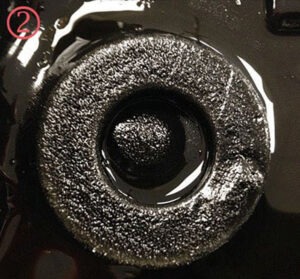
4. Different Fluid
It is advised to use the fluid that is specified in your car. If you replace your old and dirty oil with a different fluid that is not specified, then it does not function correctly and reduces the lifespan of the oil and the parts.
The transmission fluid varies based on the make and type and the transmission system in the car. A manual transmission system requires oil of specific properties and an automatic transmission needs different properties. Ask the authorized service center of your car model or brand and use the respective transmission fluid. All the lubricant has to be replaced as specified for your car.
These are some factors that turn your transmission fluid into a black useless bad oil and affect its function.
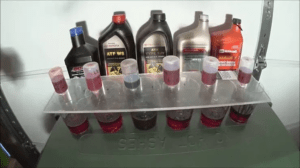
How To Fix Black Transmission Fluid And Slipping/Oil?
Replacing the oil is the only possible solution to avoid the worst. All you have to do is to remove the old oil and refill the new oil in the system. Make sure that the oil is removed from the entire system and not in any particular area. Otherwise, the new oil will mix with the old fluid, and it will reduce the life of the new fluid. Also, only use the transmission fluid that is specified for your vehicle. Refer to your user manual or such details. Using different oil will affect the functioning of the system.
Some mechanics suggest the flushing method and make the work easier. Flushing the oil is not effective and advised. The sludgy oil will move with the flush, but it only removes the above layer. The old and dirty oil will fill in the gaps and cracks, and it is hard to remove them. The entire system has to be removed and cleaned. This will affect the functionality of the system and cause trouble while driving.
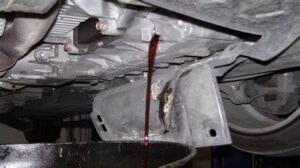

If you have the proper tools and skills, then you can do this on your own, or you can also hire a mechanic. So next time, check your oil accordingly and replace the black transmission fluid.
Q: How Much Does It Cost To Fix A Slipping Transmission?
– Transmission issues can be resolved by topping or replacing the fluid, which will cost a few hundred dollars.
Q: What Happens If Transmission Fluid Is Dirty?
-Excess dirt and contaminants in the transmission can cause a loss of hydraulic power, and dirty transmission can quickly start to interfere with transmission fluid flow which results in the lack of pressure needed for the transmission to stay in gear.
Q: What Are The Symptoms Of Dirty Transmission Fluid?
– Symptoms of dirty transmission fluid include An Unexplained Rattle, Whirs or Whines, Leaking, Burning Smell, Problems Changing Gear, and A Noisy Neutral.
Q: Can You Mix Old And New Transmission Fluid?
– The fluid starts to lose its standard properties and should be changed to keep the transmission parts and their performance at their peak. Mixing old and new fluids won’t give you the ideal viscosity and the reduces the performance of the transmission system
Q: How Often Should Transmission Fluid Be Flushed?
– Mechanics recommend a complete flush approximately every 60,000 miles.
Q: How Long Should Transmission Fluid Last?
-If the vehicle is in normal use transmission fluid must be changed every 30000 to 60000 miles however if your vehicle sustains heavy use, you could have to change the transmission fluid in as few as 15,000 miles
Conclusion-
Driving with a bad transmission oil increases the risk of system failure. All the lubricants are designed to work for a specific time. It is necessary to replace it regularly to maintain the stable performance of the vehicle. Also, do not ignore such issues because they could end worse. Now, go and check your transmission fluid if you have replaced it a long time ago and change it immediately if it is terrible.
To know more about such content, please follow us and keep an update on our page. If you have any queries or suggestions, please let us know in the comment box below.
![You are currently viewing Black Transmission Fluid And Slipping [Causes And Solutions]](https://hydraulicsuspension.com/wp-content/uploads/2021/08/photo-1562225532-946350008777.jpeg)

